Idea by
Nevenka Rajkovic Batinic, Ivana Rajkovic, Natalija Vujosevic, Vuksa Vujosevic
Call for ideas 2019
Antidevastatin
Antidevastatin
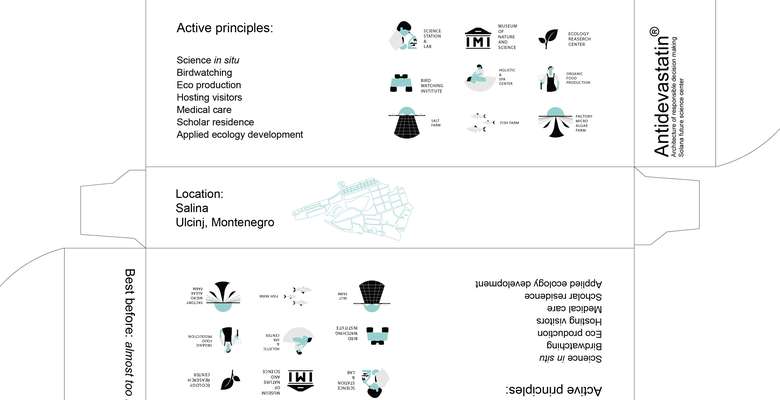
- Systemic changes
Solana is a place which represents the connection between the needs of man and natural conditions. Lately, there has been a halt in the production, which arose from the impossibility to find a new model for running the system.
Discontinuation of seawater pumps, which provide food for many species, has jeopardized the flora and fauna.
The key challenge is not finding a solution that fits the contemporary technological, economic and social circumstances, but rather finding a sustainable idea that can evolve through the changes in the future, both in science and technology, and in nature itself.
Architecture of responsible decision making is a non-invasive method of controlling human action in sensitive areas. It is a draft of the communication, open to constant changes, learning and improvement. The aim is to develop a sensible non-aggressive communication with nature, space and time, and establish harmonious relationship between society, science, technology and nature.
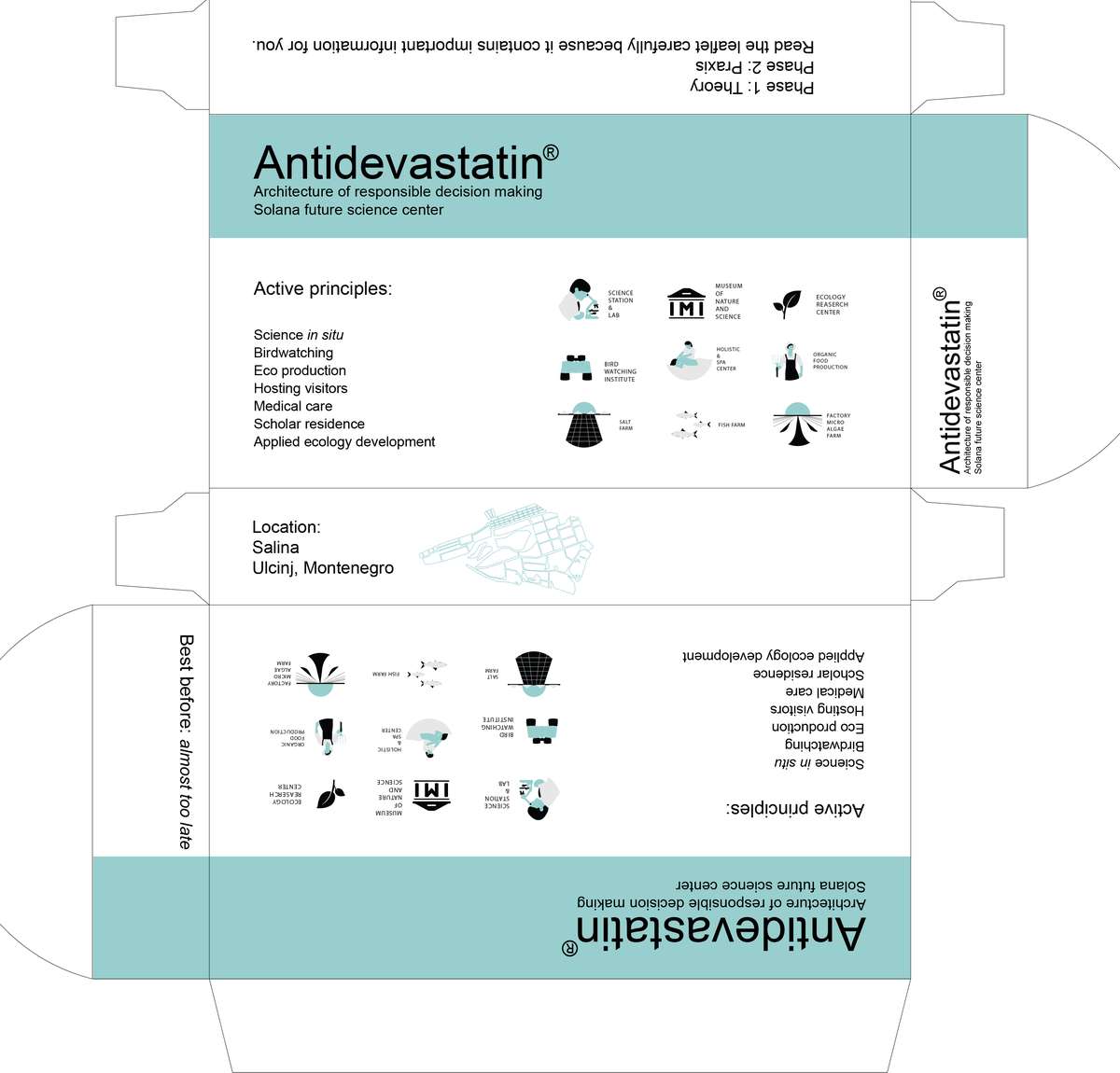
With the entire concept, we wish to underline the sensitive relationship between human society
and nature in this area, as well as the intention to proceed prudently and remedially in relation
to the current situation which is alarming.
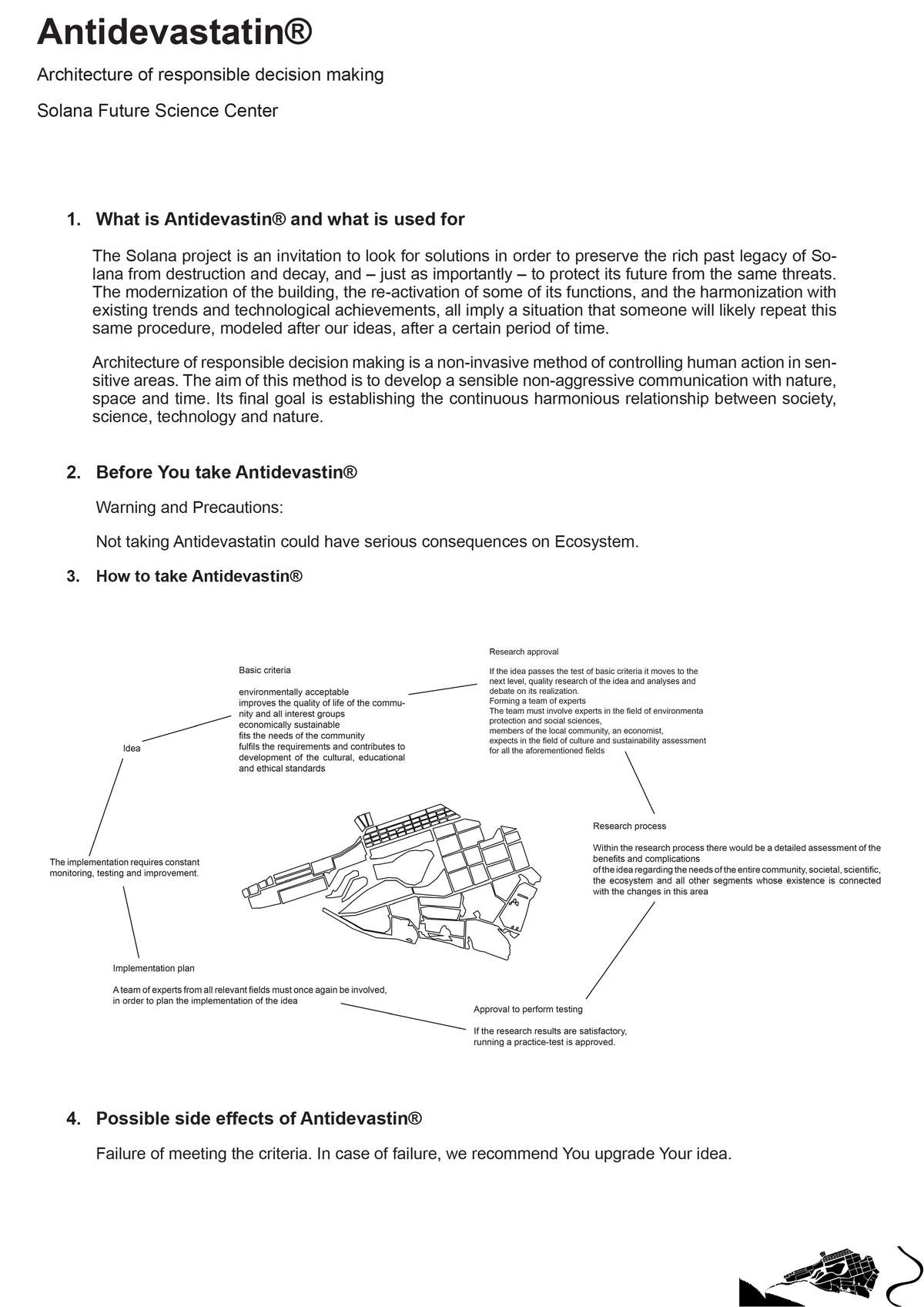
By setting up the project in a form of package and blueprint, we wish to prioritize the importance
of establishing the quality of intentions which has to be established within this kind of
project, and as the final stage, the approval and realization of the solution which should result
from a real, thoughtful and ethical assessment of capacities and needs of the area and all its
owners, and those are plants and animals, local community and time, and on the other hand
capitalism.

Every human intervention is an experiment, methodical trials in time and space,
including the time that we won’t live to witness. If we become aware not only of the past that
we owe a lot to, and the longing to preserve the values it has taught us, but also of the future
as real-time, and space as the soil that we share with the generations to come, only then can
we accomplish a constructive relationship with nature.
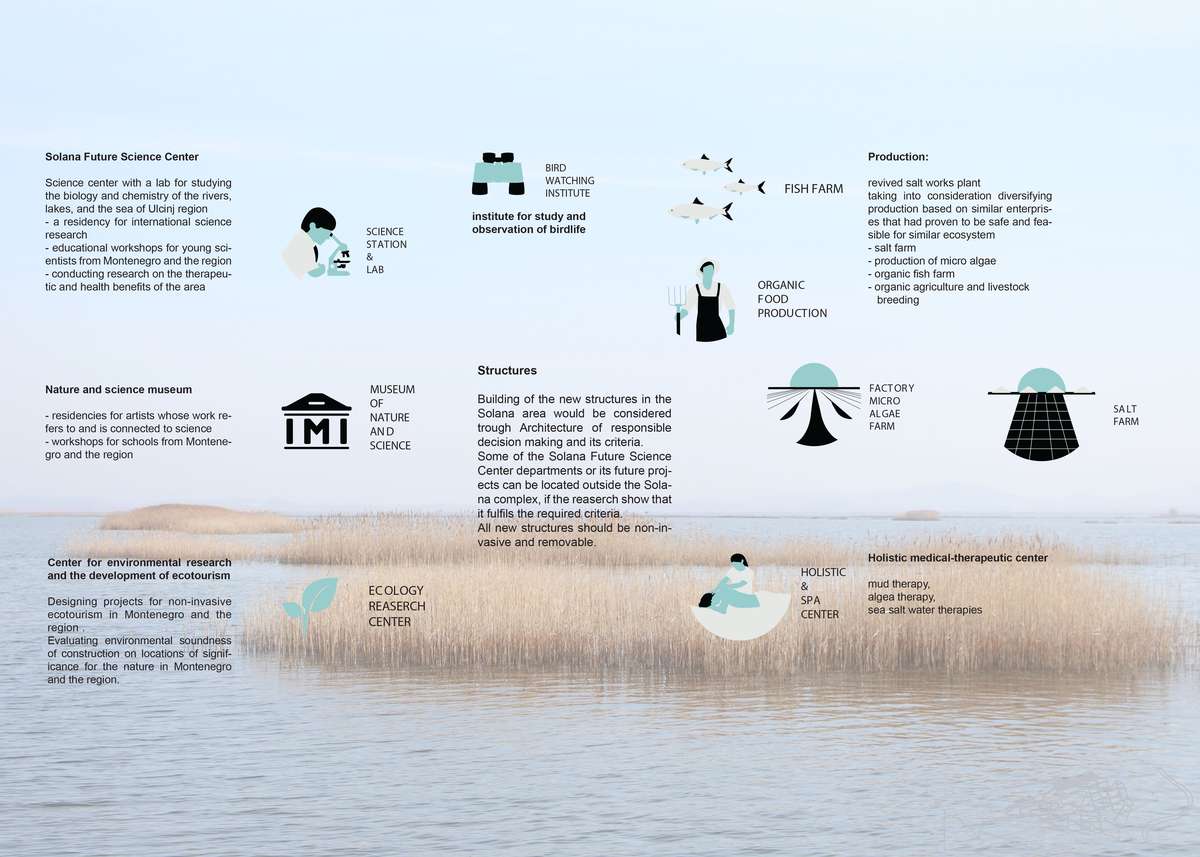
How to revive Solana without compromising its greatest value, which is the ecosystem of this area
that has attracted great attention of the scientific community and environmental organizations? The solution should be sought in the very essence of this area’s invaluableness – who is it interesting to and why? The solution for reviving Solana has to be sought exactly within these, already established communication, interest and development lines.
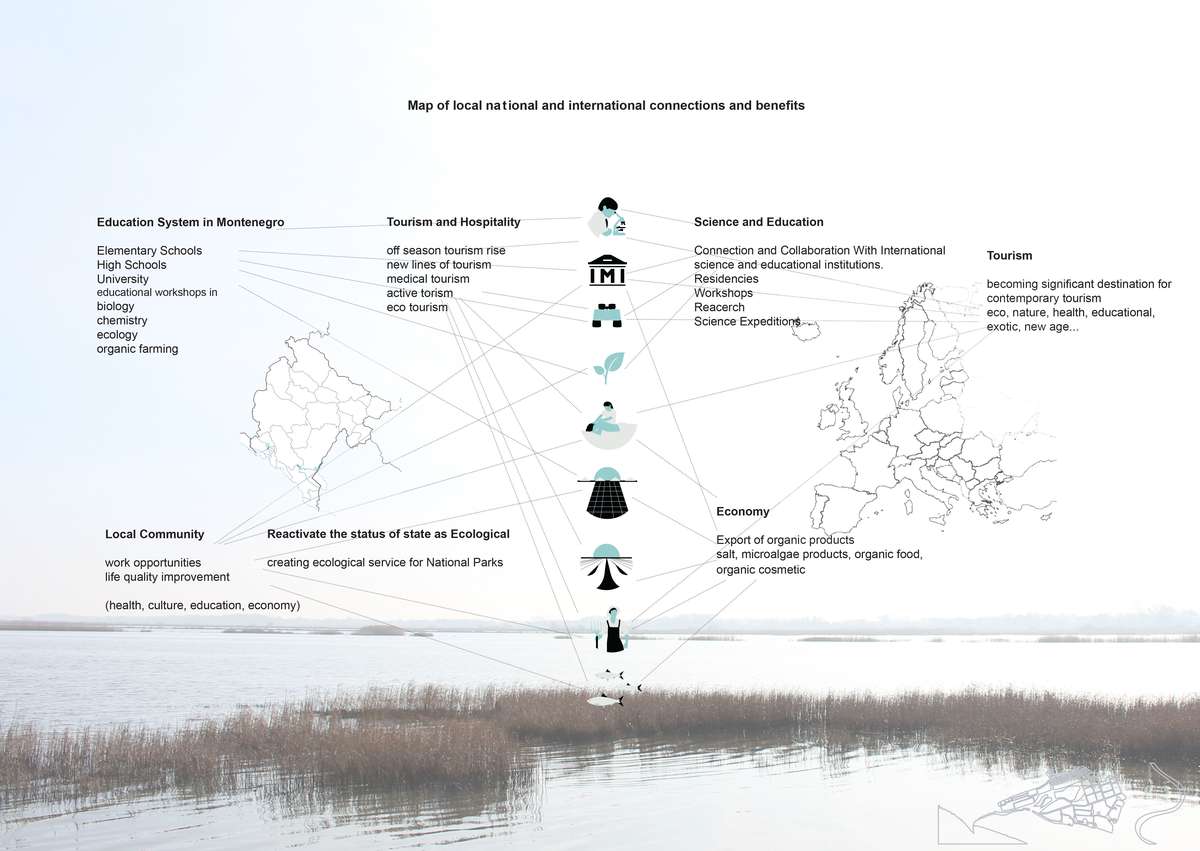
If we combine these fields of interest and adjust them to the current regional and global infrastructure of similar practices, we reach the multilayered solid solution that reflects the natural evolutionary process of this type of space in the 21st century. By connecting the fields and the preexisting capacities and interested parties, we came to a draft for the infrastructure of the Solana Future Science Center.
Antidevastatin
Antidevastatin

- Systemic changes
Solana is a place which represents the connection between the needs of man and natural conditions. Lately, there has been a halt in the production, which arose from the impossibility to find a new model for running the system.
Discontinuation of seawater pumps, which provide food for many species, has jeopardized the flora and fauna.
The key challenge is not finding a solution that fits the contemporary technological, economic and social circumstances, but rather finding a sustainable idea that can evolve through the changes in the future, both in science and technology, and in nature itself.
Architecture of responsible decision making is a non-invasive method of controlling human action in sensitive areas. It is a draft of the communication, open to constant changes, learning and improvement. The aim is to develop a sensible non-aggressive communication with nature, space and time, and establish harmonious relationship between society, science, technology and nature.
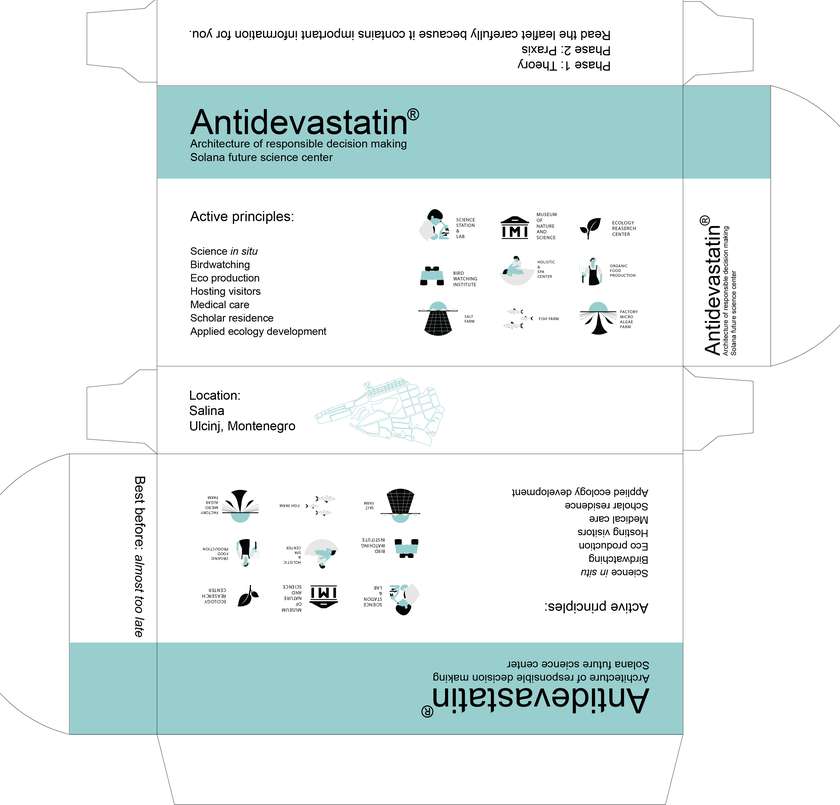
With the entire concept, we wish to underline the sensitive relationship between human society
and nature in this area, as well as the intention to proceed prudently and remedially in relation
to the current situation which is alarming.
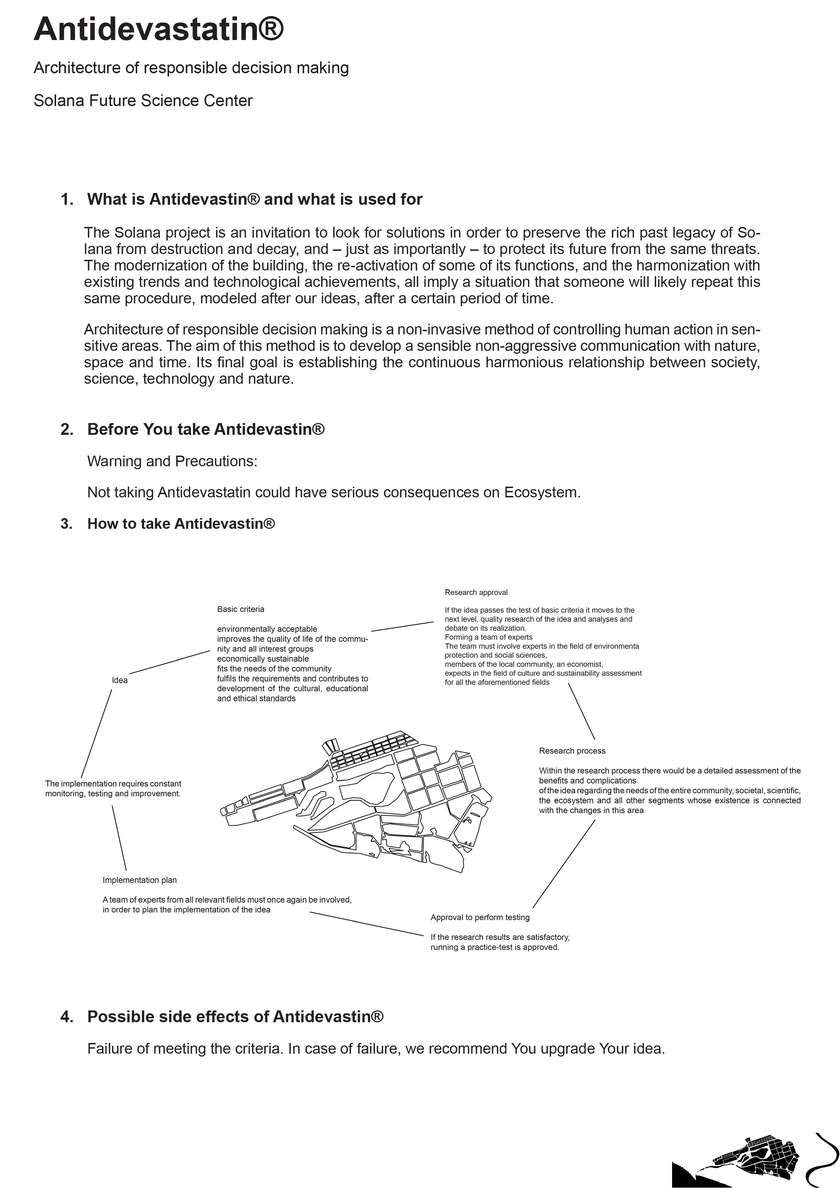
By setting up the project in a form of package and blueprint, we wish to prioritize the importance
of establishing the quality of intentions which has to be established within this kind of
project, and as the final stage, the approval and realization of the solution which should result
from a real, thoughtful and ethical assessment of capacities and needs of the area and all its
owners, and those are plants and animals, local community and time, and on the other hand
capitalism.
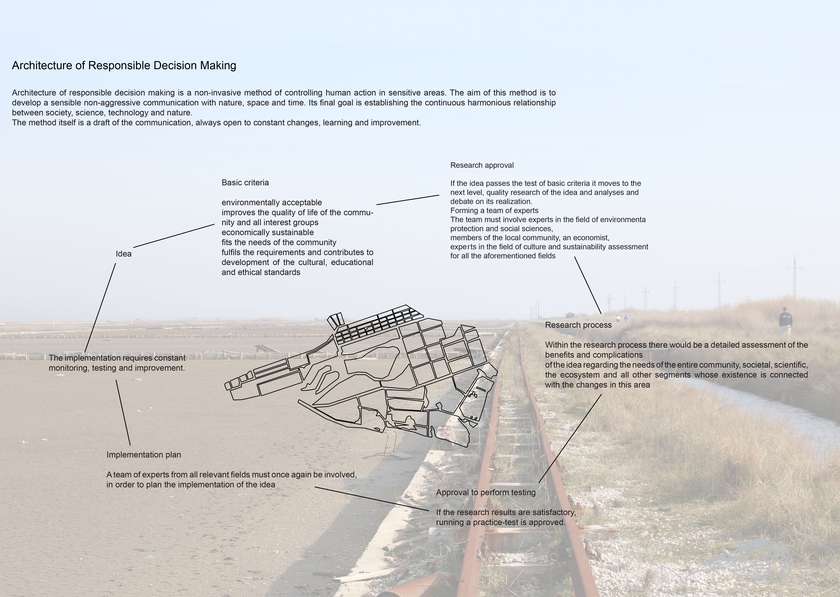
Every human intervention is an experiment, methodical trials in time and space,
including the time that we won’t live to witness. If we become aware not only of the past that
we owe a lot to, and the longing to preserve the values it has taught us, but also of the future
as real-time, and space as the soil that we share with the generations to come, only then can
we accomplish a constructive relationship with nature.
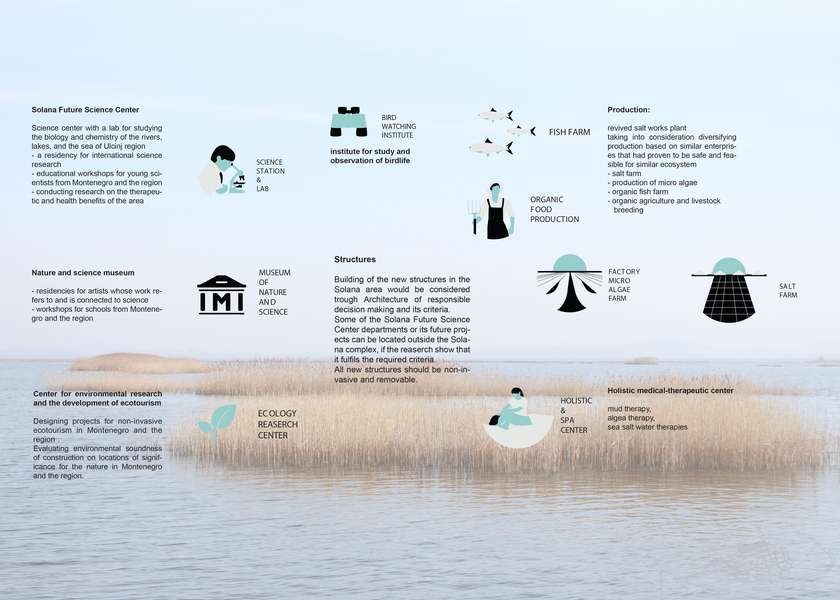
How to revive Solana without compromising its greatest value, which is the ecosystem of this area
that has attracted great attention of the scientific community and environmental organizations? The solution should be sought in the very essence of this area’s invaluableness – who is it interesting to and why? The solution for reviving Solana has to be sought exactly within these, already established communication, interest and development lines.
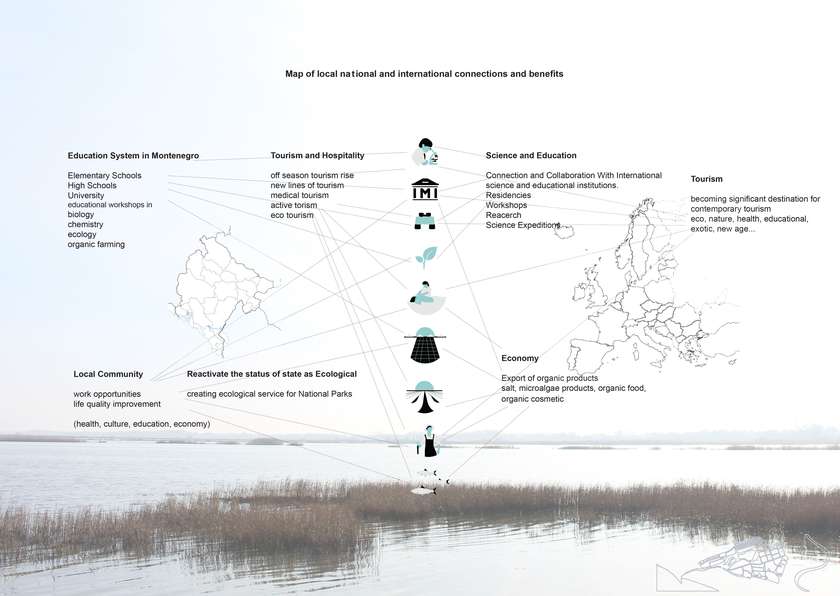
If we combine these fields of interest and adjust them to the current regional and global infrastructure of similar practices, we reach the multilayered solid solution that reflects the natural evolutionary process of this type of space in the 21st century. By connecting the fields and the preexisting capacities and interested parties, we came to a draft for the infrastructure of the Solana Future Science Center.